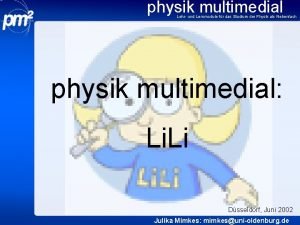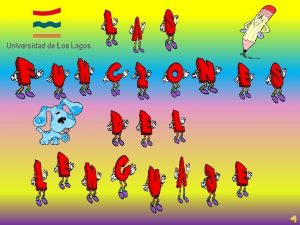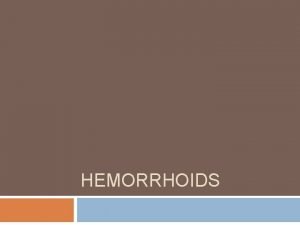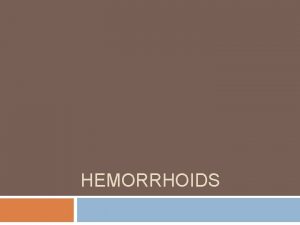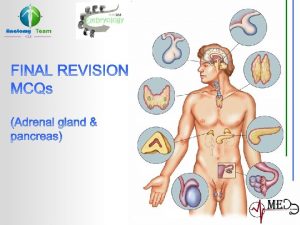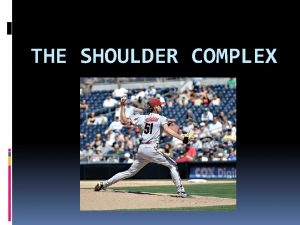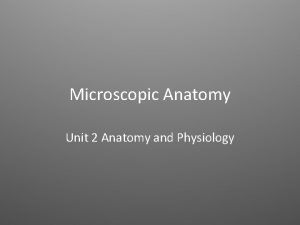Multimedial Unit of Dept of Anatomy JU A
























- Slides: 24

Multimedial Unit of Dept. of Anatomy JU

A nerve tract is a bundle of nerve fibers (axons) connecting nuclei of the central nervous system (in the peripheral nervous system this is known as a nerve fascicle)

The main nerve tracts in the central nervous system are of three types: ● association fibers ● commissural fibers ● projection fibers Caution: a tract may be referred to as commissure, fasciculus, or decussation.

Association fibers The tracts that connect cortical areas within the same hemisphere are called association tracts. Long association fibers connect different lobes of a hemisphere to each other whereas short association fibers connect different gyri within a single lobe. Among their roles, association tracts link perceptual and memory centers of the brain.

Commissural fibers Commissural tracts connect corresponding cortical areas in the two hemispheres. They cross from one cerebral hemisphere to the other through bridges called commissures. The great majority of commissural tracts pass through the corpus callosum. A few tracts pass through the much smaller anterior and posterior commissures. Commissural tracts enable the left and right sides of the cerebrum to communicate with each other.

Projection fibers Projection tracts connect the cerebral cortex with the corpus striatum, diencephalon, brainstem and the spinal cord. The corticospinal tract for example, carries motor signals from the cerebrum to the spinal cord. Other projection tracts carry signals upward to the cerebral cortex. Superior to the brainstem, such tracts form a broad, dense sheet called the internal capsule between the thalamus and basal nuclei, then radiate in a diverging, fanlike array to specific areas of the cortex.

Projection fibers are of two main types: ● afferent (sensory) ● efferent (motor)

Motor tracts are divisible into: ● pyramidal ● extrapyramidal

Pyramidal neurons (pyramidal cells) are a type of multipolar neuron found in areas of the brain including the cerebral cortex, the hippocampus, and the amygdala. Pyramidal neurons are the primary excitation units of the mammalian prefrontal cortex and the corticospinal tract. Pyramidal neurons are also one of two cell types where the characteristic sign, Negri bodies, are found in post-mortem rabies infection. Pyramidal neurons were first discovered and studied by Santiago Ramón y Cajal. Since then, studies on pyramidal neurons have focused on topics ranging from neuroplasticity to cognition

Upper motor neurons are motor neurons that originate either in the motor region of the cerebral cortex or in the brain stem and carry motor information down to the lower motor neurons. The main effector or motor neurons (efferent neurons) for voluntary movement lie within layer V of the primary motor cortex, and are a type of giant pyramidal cell called Betz cells. The cell bodies of these neurons are the largest in the brain, approaching nearly 0. 1 mm in diameter.

The primary motor cortex or precentral gyrus, is one of the most important areas in the frontal lobe. The precentral gyrus is the most posterior gyrus of the frontal lobe and it lies anterior to the central sulcus. The pyramidal cells of the precentral gyrus are also called upper motor neurons. The fibers of the upper motor neurons project out of the precentral gyrus ending in the brainstem, where they will decussate (intersect) within the lower medulla oblongata to form the lateral corticospinal tract on each side of the spinal cord. The fibers that do not decussate will pass through the medulla and continue on to form the anterior corticospinal tracts. The upper motor neuron descends in the spinal cord to the level of the appropriate spinal nerve root. At this point, the upper motor neuron synapses with the lower motor neuron, each of whose axons innervate a fiber of skeletal muscle.

These neurons connect the brain to the appropriate level in the spinal cord, from which point nerve signals continue to the muscles by means of the lower motor neurons. The neurotransmitter glutamate transmits the nerve impulses from upper to lower motor neurons, where it is detected by glutamatergic receptors.

Pyramidal tracts are mainly consisted of: ● corticospinal ● corticobulbar

Corticospinal and corticobulbar tracts.

Primary motor area/precentral gyrus (area 4), premotor cortex (area 6), and prefrontal eye field (area 8).

Course of the pyramidal tract, upper portion: the corona radiata and internal capsule

Microarchitecture of the motor cortex (Golgi stain).

Course of the pyramidal tract

In anatomy, the extrapyramidal system is a biological neural network that is part of the motor system causing involuntary actions. The system is called "extrapyramidal" to distinguish it from the tracts of the motor cortex that reach their targets by traveling through the "pyramids" of the medulla. The pyramidal pathways (corticospinal and some corticobulbar tracts) may directly innervate motor neurons of the spinal cord or brainstem (anterior (ventral) horn cells or certain cranial nerve nuclei), whereas the extrapyramidal system centers on the modulation and regulation (indirect control) of anterior (ventral) horn cells.

Extrapyramidal tracts are chiefly found in the reticular formation of the pons and medulla, and target lower motor neurons in the spinal cord that are involved in reflexes, locomotion, complex movements, and postural control. These tracts are in turn modulated by various parts of the central nervous system, including the nigrostriatal pathway, the basal ganglia, the cerebellum, the vestibular nuclei, and different sensory areas of the cerebral cortex. All of these regulatory components can be considered part of the extrapyramidal system, in that they modulate motor activity without directly innervating motor neurons.

The vestibulospinal tract is comprised of a lateral and medial pathway. The function of these tracts is to maintain equilibratory reflexes from the input of the vestibular apparatus. They will reach the axial muscles, i. e. intercostal and back muscles, as well as the extensors of the limbs. The reticulospinal tract is responsible primarily for locomotion and postural control. The tectospinal tract (also known as colliculospinal tract) is a nerve pathway that coordinates head and eye movements

Brain structures involved in motor function and the descending tracts that originate in them

Synapses of the descending motor tracts onto anterior horn neurons.

Thank you very much
 Physik multimedial
Physik multimedial Dept nmr spectroscopy
Dept nmr spectroscopy Florida dept of agriculture and consumer services
Florida dept of agriculture and consumer services Finance departments
Finance departments Worcester inspectional services
Worcester inspectional services Dept. name of organization (of affiliation)
Dept. name of organization (of affiliation) Mn dept of education
Mn dept of education Department of finance and administration
Department of finance and administration Dept. name of organization
Dept. name of organization Ohio dept of developmental disabilities
Ohio dept of developmental disabilities Hjdkdkd
Hjdkdkd Vaginal dept
Vaginal dept Gome dept
Gome dept Gome dept
Gome dept Horizontal
Horizontal Gome dept
Gome dept Hoe dept
Hoe dept La city fire interview
La city fire interview Oviposition
Oviposition Dept of education
Dept of education Florida dept of agriculture and consumer services
Florida dept of agriculture and consumer services Florida dept of agriculture and consumer services
Florida dept of agriculture and consumer services Dept a
Dept a Central islip fire department
Central islip fire department Rowan county social services
Rowan county social services
